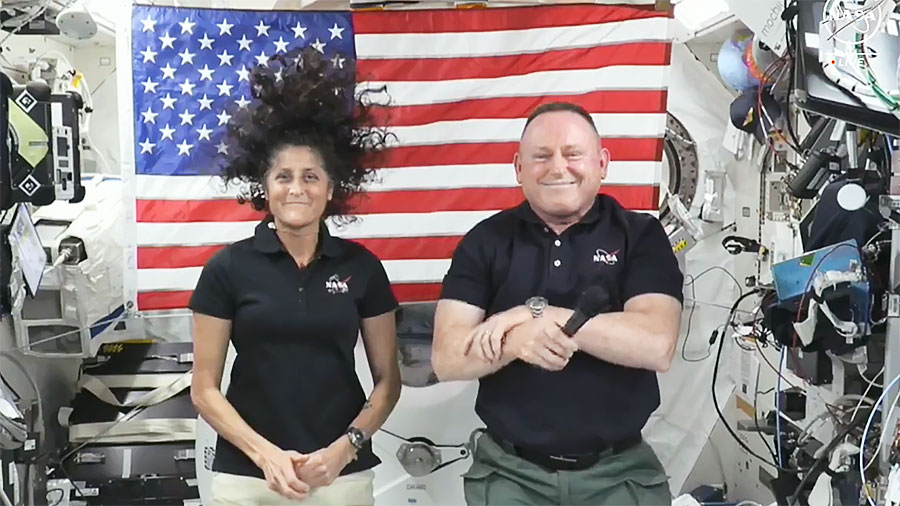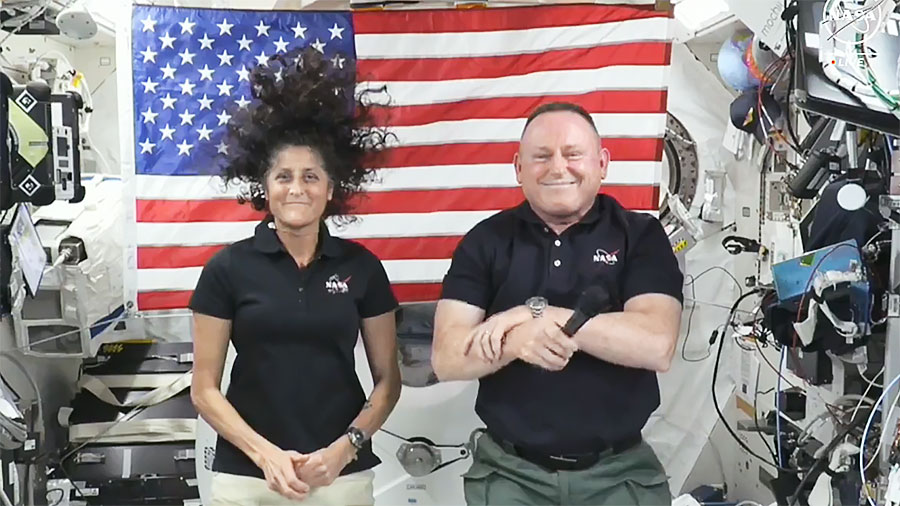
All nine astronauts and cosmonauts aboard the International Space Station practiced responding to a simulated emergency on Wednesday. Earlier, the orbital residents split their day researching blood pressure, remote robotics, and 3D printing.
The seven-member Expedition 71 crew joined the two Boeing Crew Flight Test and practiced an emergency drill in collaboration with mission controllers. The teams aboard the orbital outpost and on the ground coordinated communications and reviewed procedures in the unlikely event of a pressure leak, chemical leak, or a fire aboard the space station.
At the beginning of the day, NASA Flight Engineers Tracy C. Dyson and Mike Barratt worked on a pair of human research experiments to understand how the human body adapts to the lack of gravity. Dyson powered up research hardware to measure her brain blood flow for the Cerebral Autoregulation investigation. Barratt collected and stowed his urine samples in a science freezer for the CIPHER study. The space biology experiment looks at a broad set of long-term biological and psychological data collected from astronauts to promote health and well-being on space missions.
NASA astronaut Jeanette Epps spent most of her day in the Columbus laboratory module exploring ways to control a robot on the ground from a spacecraft. Epps coordinated with robotics engineers on Earth remotely manipulating a robot using a computer interface while testing its ergonomic features and haptic feedback for conditions such as wind and gravity. Results may inform future exploration missions to the Moon, Mars, and beyond.
NASA Flight Engineer Matthew Dominick performed a video inspection of components on the Inter-Orbit Communications System (ICS) rack located in the Kibo laboratory module. The ICS enables data to be uplinked to the orbital outpost and downlinked to mission controllers using JAXA’s (Japan Aerospace Exploration Agency) Data Relay Test Satellite.
NASA astronauts Butch Wilmore and Suni Williams, representing Boeing’s Crew Flight Test, spoke to reporters today from the space station answering questions about their mission and the Starliner vehicle. NASA and Boeing managers also discussed the Crew Flight Test mission with the media in an audio teleconference afterward. Watch the crew news conference here and listen to the media briefing here. The duo earlier completed life support work refilling temperature loops with water in the Tranquility module’s internal thermal control system.
Working in the space station’s Roscosmos segment, Flight Engineer Nikolai Chub activated a 3D printer in the Nauka science module and tested its operations and ability to manufacture hardware on demand in space. Flight Engineer Alexander Grebenkin’s day was filled mostly with household duties such as checking carbon dioxide monitors, synchronizing cameras with station clocks, and downloading scientific data to a laptop computer. Station Commander Oleg Kononenko started his day speaking to science, technology, and education professionals near Moscow. Afterward, he jogged on a treadmill while attached to sensors for a physical fitness test.
Learn more about station activities by following the space station blog, @space_station and @ISS_Research on X, as well as the ISS Facebook and ISS Instagram accounts.
Get weekly video highlights at: https://roundupreads.jsc.nasa.gov/videoupdate/
Get the latest from NASA delivered every week. Subscribe here: www.nasa.gov/subscribe

